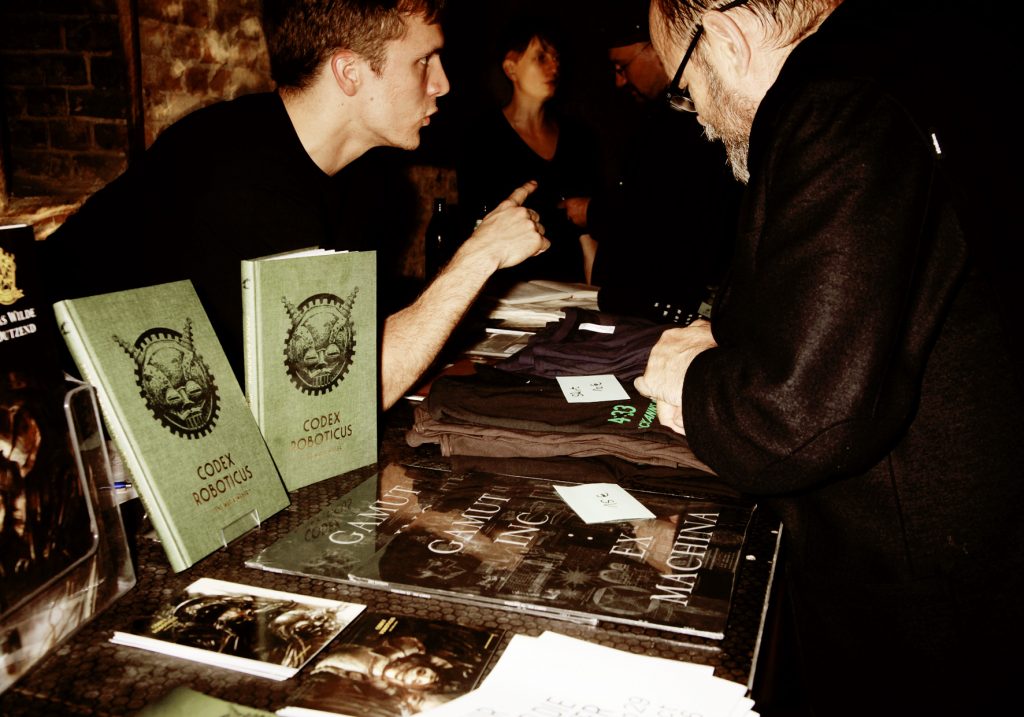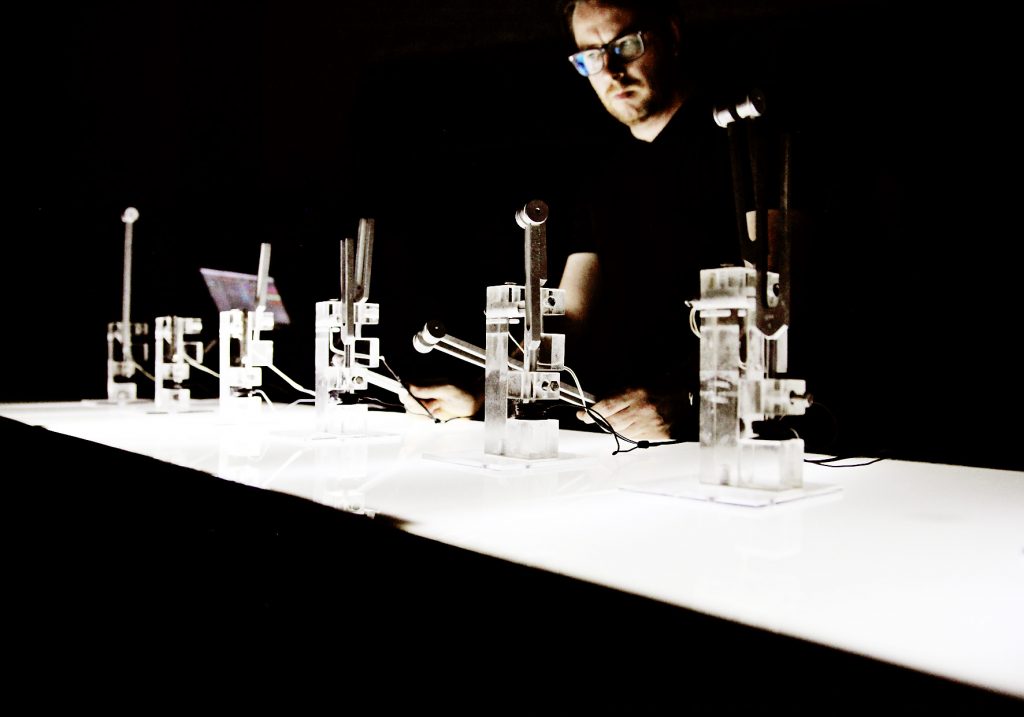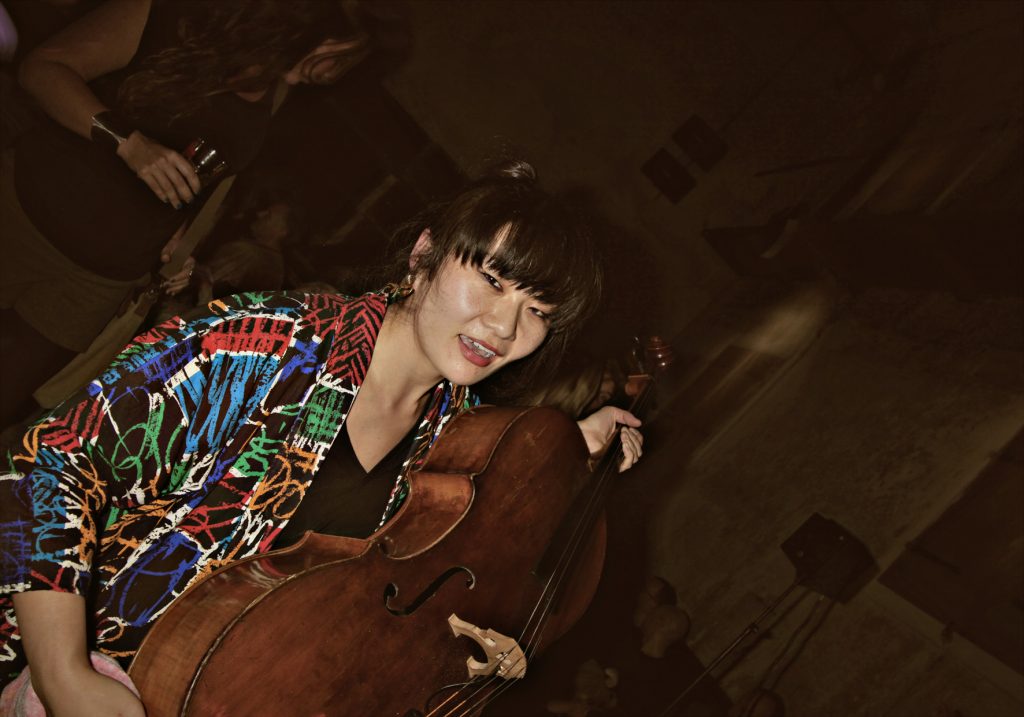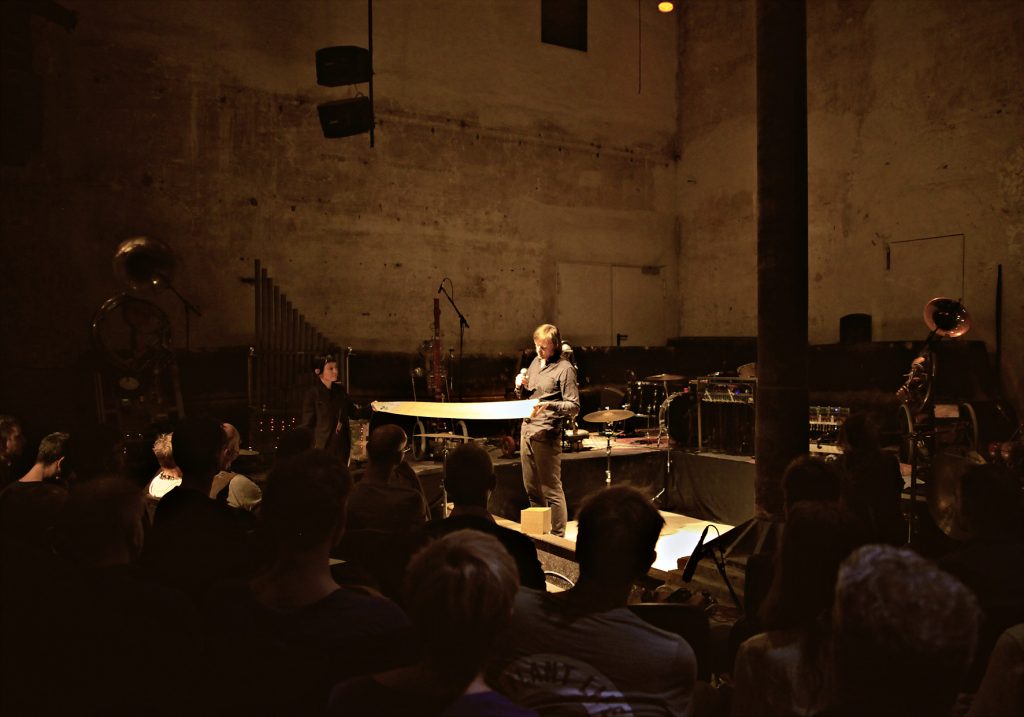
SEP 29 – OCT 1 2016 @ Musikbrauerei, Greifswalder Str. 23A, Berlin
Thursday SEP 29
CONLON NANCARROW (US/MEX) studies for player piano
KRISTOF LAUWERS (BE) study #16
HACKLANDER\HATAM (IR/US) enlistment as enlightenment (UA)
BRYAN JACOBS (US) for 2 computer-controlled flutes
MARCUS SCHMICKLER (D) ATA OTO (UA)
MARTIN BURCKHARDT (D) / lecture: The Virtuoso is dead! Virtuality lives!
Friday SEP 30
PIOTR KUREK (PL) 12 pieces for Olbeter’s machines (UA)
RHYS CHATHAM (US) Tzadkiel’s Tale (UA)
GAMUT INC (D) Planet Nine (UA)
OKKYUNG LEE (US) SoomNoRae (UA)
LESLIE DUNTON-DOWNER (US) / lecture: Riffs on Robot
Saturday OKT 1
NICOLAS BERNIER (CA) frequencies (a)
HILDUR GUÐNADÓTTIR (IS)
JENS MARIA WEBER (D) / reading: Codex Roboticus
GAMUT INC (D) machina
PIERRE BASTIEN (FR) quiet motors
SONIC ROBOTS (D) Tripods One
SOUND INSTALLATIONS / SCULPTURES by
Michele Pedrazzi (IT): CICADAS
Gerhard Kern (D): VEXATIONS
Bryan Jacobs (US): FLUTE MACHINE
Dada Machines (D): HANDS ON
Jens Maria Weber (D): SPHINX
www.bz-berlin.de
www.gq-magazin.de
www.musikzeitung.ch

concept/production/curation: gamut inc
curation: gamut inc & N.K. Projekt
sound engineer: Olivia Oyama
recordings: Paul Paulun
PR: Guido Möbius/autopilot
gamut inc präsentierten in Kooperation mit N.K. Projekt an drei Tagen in der Berliner Musikbrauerei 7 Uraufführungen, Konzertbeiträge bestehender Ensembles, Vorträge, eine Lesung und Klanginstallationen. Mit im Programm sind vor allem Vorreiter und herausragende Entwickler von Maschinenmusik und Musikmaschinen. Die Kompositionsaufträge stellen die Musiker vor die Herausforderung für die Musikroboter Stücke zu schreiben. Das Wort Roboter taucht zwar erst 1920 zum ersten Mal in Karel Capek`s Schauspiel „Rossums Universal-Robots“ auf – doch wie sie auch genannt werden, ob Roboter, Golem, Androiden, Transformers oder Automaten, sie beflügeln die menschliche Phantasie seit langem. Inzwischen wundert sich niemand mehr, wenn halbkugelförmige Roboter in den Eingangsbereichen großer Elektronikkaufhäuser herumfahren. Der Roboter von heute ist eine Wunscherfüllungsmaschine, die staubsaugt, Rasen mäht, bald wohl Auto fährt und musiziert. Dabei gibt es sowohl technisch als auch künstlerisch die unterschiedlichsten Ansätze. Von der showorientierten Roboterrockband, über höchst differenzierte Kirchenorgel- und Klavierautomaten, bis zu spezialisierten Geräuschmaschinen ist alles vertreten. Im Rahmen des dreitägigen Festivals WIR SIND DIE ROBOTER erleben wir Musikroboter live auf der Bühne. 10 Maschinen des weltgrößten Roboterorchesters der LOGOS FOUNDATION GENT sind vor Ort. Ebenso Altmeister PIERRE BASTIEN, der bei seiner Performance, während er selbst musikalisch eingreift, zu einem Teil der Apparatur wird, und dessen mechanische Installationen durch ihre Einfachheit begeistern. Das Berliner Ensemble GAMUT INC stellt seine erstaunlichen Musikroboter vor. Und nicht zuletzt die Musikmaschinen von ROLAND OLBETER, ein pneumatischer Organismus, dessen Teile ineinander greifen und nur als Ganzes funktionieren.
Gefördert durch Hauptstadtkulturfonds und Bezirksamt Pankow von Berlin


Music-machines take over the Musikbrauerei for the world’s first ever robot-music convention! Featuring pioneering music-machine ensemble Logos Foundation, the Roland Olbeter Machines and the modern machines of gamut inc, plus new compositions for machines, sonic installations, etudes, demonstrations, sculptures, midnight lectures, a player-piano concert program and more.
The word “robot” first appeared in 1920, in Karel Čapek’s play “Rossum’s Universal Robots”. Yet no matter what they are called, whether it’s robot, golem, android, transformer or machine, they have long inspired the human imagination. Robots have kept their appeal as objects for the projection of ideas and for speculation. More and more scientific disciplines are involved in robotics, in particular mechatronics (mechanics, electrical engineering and computer science) and Artificial Intelligence. These days, hardly anyone is surprised to find hemispherical robots rolling around the entrance areas of large electronics stores. The robot of today is a machine for fulfilling wishes: it vacuums the floor, mows the lawn, soon it will drive the car – and it makes music. Since the early 2000s, research groups have emerged worldwide who make robotics available for music production. The most varied of approaches can be found here, both technically and artistically. From the show-oriented robot rock band, to highly differentiated church organ and piano machines, to specialized sound machines: everything is represented. Artists like Björk and Aphex Twin have had musical machines built specifically for their productions. Old piano-roll systems and recordings are being rescanned to precisely recreate legendary piano recordings by Glen Gould or Jelly Roll Morton on today’s precision piano robots and thereby bring the performers back to life.



In addition to concerts, a supporting program will further examine the topic of machine music. The authors Martin Burckhardt, Leslie Dunton Downer and Jens Maria Weber will participate in three midnight talks to discuss the philosophical and technical implications of machine music.
Music robots are computer controlled, yet they produce sounds by analog means. Metal pins pluck strings, movable modules runs along a piano keyboard, mechanical arms press the keys or beat the drums. As for the appearance and functions of music-making robots, there are hardly any limits placed on the imagination. They can take on a humanoid form or be reduced only to the components necessary for their actions. Many a music robot, much like his colleagues in industry and research, is little more than a cylinder or a hinged bracket.
The combination of “natural” sound and programmability provides new opportunities for instrumental music, for example, concerning tempos, event density or performance techniques. Fluid transitions between sound, noise and rhythmic pulses can be implemented accurately. Music robots close the gap, so to speak, between acoustic and electronic music. At the same time, these often idiosyncratic constructions have a visual appeal that makes concerts or installations into very special experiences.
















